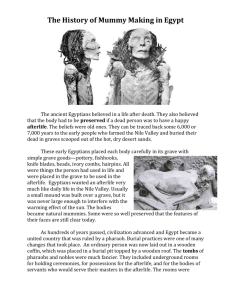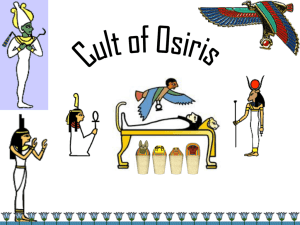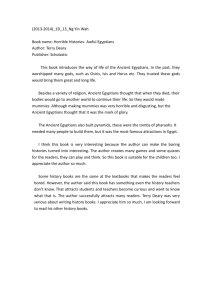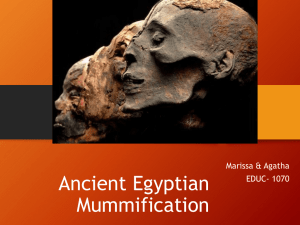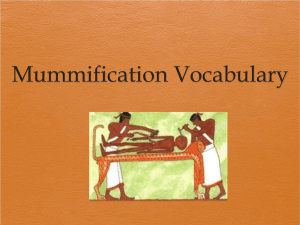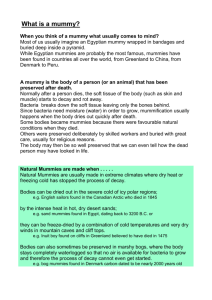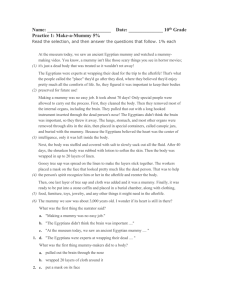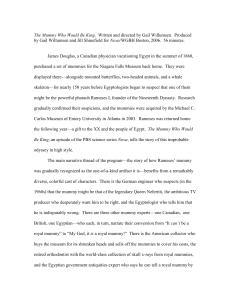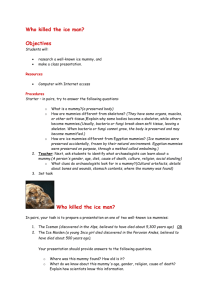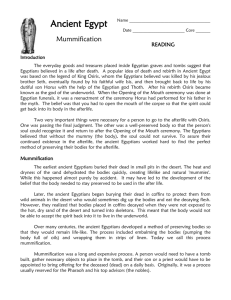In ancient Egyptian belief, a spirit released at a person`s death which
advertisement
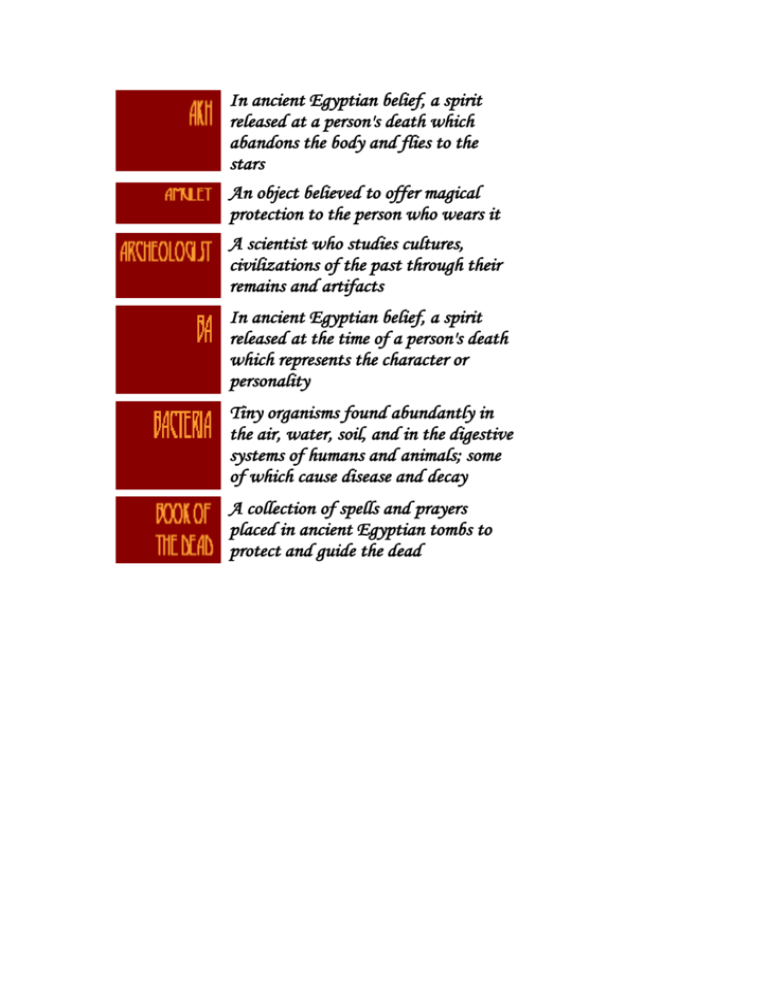
In ancient Egyptian belief, a spirit released at a person's death which abandons the body and flies to the stars An object believed to offer magical protection to the person who wears it A scientist who studies cultures, civilizations of the past through their remains and artifacts In ancient Egyptian belief, a spirit released at the time of a person's death which represents the character or personality Tiny organisms found abundantly in the air, water, soil, and in the digestive systems of humans and animals; some of which cause disease and decay A collection of spells and prayers placed in ancient Egyptian tombs to protect and guide the dead Mummification in ancient Egypt was a very long and expensive process. From start to finish, it took about seventy days to embalm a body. Since the Egyptians believed that mummification was essential for passage to the afterlife, people were mummified and buried as well as they could possibly afford. High-ranking officials, priests and other nobles who had served the pharaoh and his queen had fairly elaborate burials. The pharaohs, who were believed to become gods when they died, had the most magnificent burials of all. In the case of a royal or noble burial, the embalmers set up workshops near the tomb of the mummy. The art of Egyptian mummification consisted of many steps. First, the body was washed and ritually purified. The next step was to remove the deceased person's inner organs. A slit was cut into the left side of the body so that the embalmers could remove the intestines, the liver, the stomach and the lungs. Each of these organs was embalmed using natron, which served to dry out the organs and discourage bacteria from decaying the tissues. The organs were then individually wrapped using long strips of linen and placed in canopic jars. The lids of these jars were fashioned after the four sons of Horus, who were each entrusted with protecting a particular organ. Here are some canopic jars with lids depicting the four sons of Horus: Kelsey Museum of Archeology, #KM 73.1.1-4 *Qebehsenuef, the falcon head -- intestines *Duamutef, the jackal head -- stomach *Hapy, the baboon head -- lungs *Imsety, the human head -- liver After the removal of the inner organs, the body cavity was stuffed with natron. The brain was then removed through the nose using long hooks. Since the ancient Egyptians considered the brain unimportant, it was probably thrown away. The body was then placed on a slanted embalming table and completely covered with natron. This allowed fluids to drip away as the body slowly dried out. This part of the process took about forty days, after which the natron was removed, inside and out, to reveal a dried, shrunken body. After another cleaning, the body was rubbed with unguents to aid in preserving the mummy's skin. The head and body cavity were stuffed with packing. The mummy was then prepared for bandaging. First, the embalming cut in the side of the body was sewn up and covered with a patching depicting the protective eye of Horus. The body was adorned with gold, jewels and protective amulets. Fingers and toes were covered with protective gold caps and individually wrapped with long, narrow strips of linen. Arms and legs were also wrapped, then the entire body was wrapped to a depth of about twenty layers. The embalmers used resin to glue the layers of wrappings together. The wrapped head was covered with a mummy mask. Finally, the last layer of bandages went on and was given one last coating of resin. The mummy was the ready for burial. Once the mummy was finally prepared, it was time for the funeral. The mummy and its canopic jars were transported by sled from the embalming tent to the tomb. People were hired to demonstrate their grief by crying and throwing dust on their hair. At the site of the tomb, religious ceremonies were held to prepare the dead for the afterlife. In particular, the Opening of the Mouth ceremony was believed to allow the mummy to see, hear, eat and drink in the spirit world. Over time almost all Egyptians who could afford to became mummies when they died -- a total of about 70 million mummies in 3,000 years. By the 4th century AD, many Egyptians had become Christians and no longer believed that mummification was necessary for life after death. Eventually, the Egyptians gave up the art and science of making mummies. So where did all the mummies go? Sadly, most were plundered in ancient times by grave robbers and vandals looking for treasures wrapped up in the bandages. Countless mummies were also destroyed during the Middle Ages, when they were ground into powders to make supposedly magical potions. Later on, modern treasure hunters blundered into their tombs looking for artifacts and souvenirs. Even industry aided the destruction by using mummies' bandages to make paper or burning their bodies for fuel. The best preserved mummies are those of the pharoahs and their relatives. These mummies tended to be more carefully embalmed and protected from harm. The mummies that have survived allow us to look back into the past and know something of the ancient Egyptians and their time. Three of the most famous Egyptians mummies are Tutankhamen, Seti I and Rameses II (Ramses the Great). Tutankhamen, known to many as King Tut, was probably just a boy when he was crowned pharoah in the 18th Dynasty. He was still a teenager when he died of unknown causes and was entombed in the Egyptian Valley of Kings. Although Tutankhamen was not one of the more distinguished or important pharoahs in his own time, he has a very special place in ours. Tutankhamen's tomb was discovered in 1922 by Howard Carter. Over the next several years, Carter's expedition carefully uncoverd the riches within, including the gold mask above. A number of mysterious deaths that followed the opening of the tomb set off wild rumors of a mummy's curse. Today, Tut is known to countless people the world over, in part because his is the only pharoah's tomb ever discovered intact. Tut's burial site had somehow escaped pillaging by grave robbers for over 3000 years. His mummy and its magnificent solid gold sarcophagus, along with wall paintings, furniture, weapons, games and other artifacts have survived to the present, giving us a unique glimpse at the trappings of an ancient pharoah.
